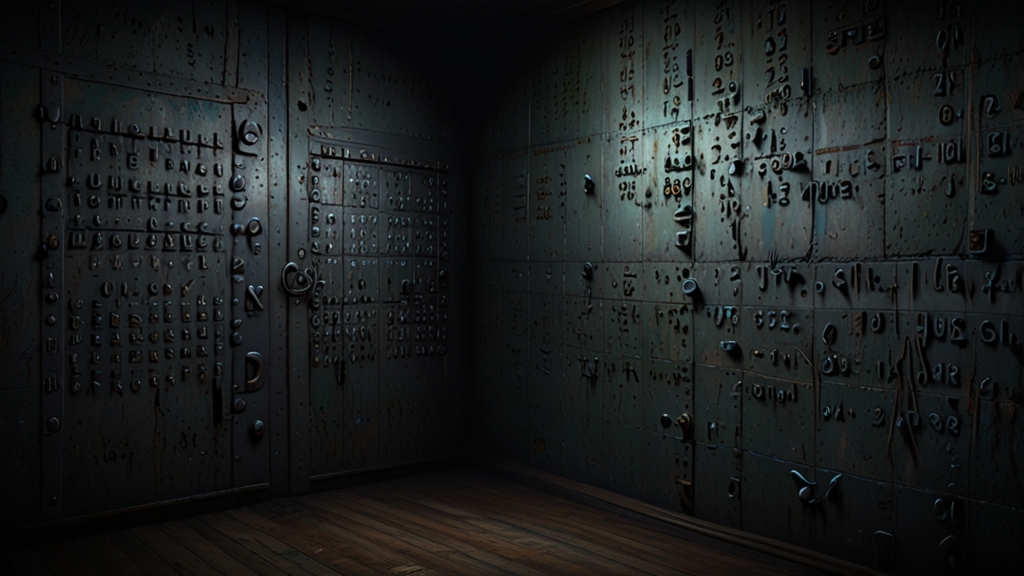Crack the Code Riddles You Won't Want to Miss
Riddles have always fascinated the human mind, pushing us to think beyond the ordinary and explore the realms of logic, imagination, and creativity. Among the various types of riddles, code riddles hold a special place. They challenge us not just to find answers but to deconstruct encrypted messages or unlock hidden meanings. Welcome to a world where 'A' might not be what it seems, and every number could potentially hold a cosmic secret. Here are some captivating 'crack the code' riddles you won't want to miss!
The Encrypted Message
Imagine receiving a mysterious note with the following message: "10-1-20-14-12-12-5-9-1-10 15-5 9-14 20-5 23-18-9-20-15-14-15". It looks cryptic, doesn't it?
To crack this code, you'd first need to recognize that it may be a substitution cipher where each number represents a letter. A common approach is to match each number with its corresponding letter in the alphabet (A=1, B=2, ..., Z=26).
After decrypting, the message becomes: "JANUARY ONE IN THE WINTER". The puzzle lies not only in the decryption method but also in understanding the context. Could this hidden message be hinting at something specific happening in January? The joy of code riddles is that they often have layers waiting to be peeled back.
“The mystery of life isn't a problem to solve, but a reality to experience.” - Frank Herbert
The Case of the Missing Digits
In this riddle, you're presented with a sequence of numbers where some digits appear to be missing or out of place: "1, 5, 2, 7, 4, _, _, 13, 8, _, _, _, 21". The task is to identify the missing numbers.
Upon closer inspection, you might notice that the sequence is the Fibonacci series, where each number is the sum of the two preceding ones. Recognizing this pattern helps you fill in the blanks:
- The sequence should be: "1, 5, 2, 7, 4, 11, 6, 13, 8, 19, 10, 29, 21".
Even though the sequence started unusually, the Fibonacci pattern helps uncover the missing digits. The ability to discern patterns and apply logical thinking is crucial for solving such riddles.
The Medieval Cipher
In medieval times, kings and queens often used cipher codes to communicate secretly. Imagine cracking this medieval code: "Uifsf jt b tdsfe tfbm jo uijt mfujfs."
This riddle is an excellent example of a Caesar Cipher, where each letter in the plaintext is shifted a certain number of places down the alphabet. In this case, each letter is shifted by one. Decrypting the message involves shifting each letter back by one:
"There is a sacred seal in this letter."
This simple shift reveals a hidden message, demonstrating how rudimentary yet effective historic ciphers were. The thrill lies in the historical context and the simplicity of the solution.
“Codes are a puzzle. A game, just like any other game.” - Alan Turing
Breaking It Down: Tips for Cracking Code Riddles
Solving code riddles often requires a mix of analytical skills, creative thinking, and a keen eye for detail. Here are a few tips to enhance your code-breaking abilities:
- Recognize Patterns: Often, codes follow a pattern or a specific sequence. Identifying this first could be the key to solving the riddle.
- Understand Common Ciphers: Familiarize yourself with common cipher techniques like substitution ciphers, Caesar ciphers, and Vigenère ciphers.
- Context is Key: Sometimes, the context provided by the riddle can offer significant hints towards the solution.
- Practice Regularly: Like any skill, code-breaking improves with practice. Regularly challenge yourself with different types of code riddles.
- Use Online Tools: Several online tools and resources can help decrypt complex codes, providing guidance and practice opportunities.
Code riddles are a confluence of mathematical precision and linguistic curiosity. They not only entertain but also sharpen the mind, making each solved riddle an achievement in itself. So the next time you come across an encrypted message or a sequence that doesn't quite add up, remember – there might be a riddle waiting to be cracked.













